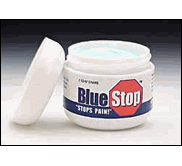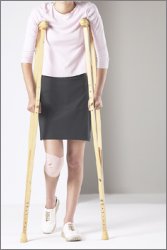What to Do if Your Teeth Get Knocked Out (and 9 MORE Important Injury Tips)
by www.SixWise.com
Knowing what to do in the event of an emergency is not something
that we often think about, or want to, but it is extremely
important. If you read our first article on the topic, What
to Do if You Cut Off Your Finger (and 9 Other Important Injury
Tips), then you already know an average of 18,048 people
died each year from unintentional home injuries between 1992
and 1999, and that doesn't include injuries that occurred
outside of the home.
|

Children, the elderly and people who are obese are
most susceptible to heatstroke. Find out what to do
if a heat emergency occurs in Tip #5.
|
You'll also be well prepared in the event of a snake bite,
serious burn, concussion and other injuries if you use the
tips discussed in that article. This topic is so important
that here we're going to discuss 10 more injuries, and the
tips that can help protect you and your loved ones in times
of emergency.
What to Do If …
1. Your Teeth Get Knocked Out (or Broken)
If your tooth has been knocked out, you should get to your
dentist immediately, as he or she may be able to reimplant
the tooth. To transport the tooth, use any of these options
(and do it quickly, as the longer you wait, the less chances
of a successful reimplantation):
-
Put the tooth back in the socket. Bite down on gauze
or a wet tea bag to help keep it in place.
-
Store the tooth in a small container covered with a small
amount of whole milk or saliva.
-
If you cannot get it into the socket, the tooth can be
carried between the lower lip and lower gum or under the
gum. (Be careful not to swallow the tooth.)
-
Special devices called Save-a-Tooth and EMT Tooth Saver,
which contain a case and a special fluid to use if a tooth
is knocked out, may be available from your dentist to
keep in your first-aid kit.
When handling the tooth, only touch the chewing end, not
the root. You can also apply a cold compress to the mouth
area to ease pain and apply pressure, using gauze, to control
bleeding.
If a tooth is fractured, you should seek medical help immediately,
as exposed nerve tissue could become infected. Small chips
are less of an emergency, but should be looked at by your
dentist.
2. You Break a Bone
Most importantly, stay still, don't attempt to "test"
to see if you can move the bone and don't try to straighten
or reposition the bone. In most cases, you can call 911 or
get to an emergency room for further treatment. However, if
the skin is broken, lightly rinse it to remove any visible
dirt and cover it with a sterile dressing. If necessary, you
can use a rolled up newspaper or strip of wood as a splint
to immobilize the area above and below the injured bone. Ice
packs can be applied to reduce pain and swelling while waiting
for medical attention. Note: Never attempt to move a person
who has a possible spine injury.
3. You Get Food Poisoning
If you think you have eaten something bad, and two to six
hours later start to have nausea, vomiting, diarrhea, fever,
weakness and headache, you may have food poisoning. In most
cases, food poisoning will resolve itself in a couple of days.
You should drink plenty of water to prevent dehydration, and
children should be given an electrolyte drink. Avoid eating
any solid foods or dairy products until the diarrhea has passed.
If you are unable to keep fluids down due to nausea or vomiting,
or the illness lasts longer than two to three days, you may
need medical attention to prevent dehydration. Also, if you
have eaten toxic mushrooms or shellfish, you should get to
an emergency room as your stomach may need to be emptied.
4. You are Choking
Try to cough forcefully to dislodge the item. However, if
a person is unable to speak or breathe, the Heimlich maneuver
should be performed by:
-
Wrapping your arms around the person's waist from behind
-
Making a fist and placing the thumb side just above the
person's navel (below the breastbone)
-
Grasping the fist with your over hand and making quick,
upward and inward thrusts with your fist
-
For pregnant women or obese people, you should wrap your
arms around their chest, place your fist on the middle
of the breastbone between the nipples and make backward
thrusts
This should be continued until the item is dislodged or the
person loses consciousness. If this happens, CPR should be
administered and 911 should be called immediately.
5. You Have Heatstroke or Another Heat Emergency
Heat emergencies begin with excessive sweating, fatigue,
thirst and muscle cramps, but can progress to be much more
serious, particularly among children, the elderly and people
who are obese. Heat cramps can lead to heat exhaustion, caused
by dehydration, and then heatstroke (the most serious heat
emergency, which can cause shock, brain damage, organ failure
and even death).
|
Relive Pain Fast With BlueStop Gel
BlueStop Gel with Emu
Oil provides you with a natural, proven topical
that will relieve your pain -- from sprains, sore muscles,
achy joints and even arthritis -- in minutes.
 All
of BlueStop's ingredients are completely born of nature,
including: All
of BlueStop's ingredients are completely born of nature,
including:
- Whole leaf Aloe Vera
- Pure Emu Oil
- Kokum Butter
- Glucosamine
- MSM
- Painblock 7: a proprietary blend of natural agents
for fast pain relief
Learn
more about
BlueStop Gel with Emu Oil now!
|
If you or a family member feels the heat is getting to you
(you may feel lightheaded, dizzy, nauseous, weak or have a
headache), you should:
-
Lie down in a cool place with the feet elevated one foot
-
Apply cool wet cloths or cool water to the skin, cold
compresses to the neck, groin and armpits and use a fan
to lower body temperature
-
Give the person a salted drink (either a sport's drink
or water with salt added, one teaspoon salt per quart
of water) or cool water, one-half cup every 15 minutes
(do NOT give any fluids if the person is vomiting or unconscious)
-
Massage any cramping muscles until they relax.
-
If the person shows signs of shock, seizures or loses
consciousness, call 911 immediately
6. You Sprain Your Ankle
The first thing to do after a sprain is to apply an ice pack
to reduce swelling (wrap the ice in a cloth, don't apply it
directly to the skin). You may then want to try applying BlueStop
gel with Emu oil, which is an all-natural and fast-acting
gel to help relieve pain. Next, keep the sprained area immobilized
by wrapping it firmly in an ACE bandage, or by using a splint
if necessary. You should then elevate the sprain above heart
level (even during sleep) and rest it for several days. All
pressure should be kept off the injury until it stops hurting,
which may require the use of crutches.
If you suspect a broken bone, have severe pain or hear a
popping sound, you should go to the emergency immediately.
Further, you should call your doctor if swelling persists
for more than two days, you see signs of infection or pain
persists for more than several weeks.
7. You Dislocate Your Finger/Shoulder
A dislocation occurs when the bone and joint separate, and
it may be hard to distinguish this injury from a broken bone.
If you suspect a dislocation, you should call 911 or go to
the emergency room immediately. In the meantime, keep the
person still and, if skin is broken, rinse any excess dirt
and cover it with a sterile dressing.
|

Wrapping a sprain in an ACE bandage helps keep it immobilized,
and using crutches helps keep pressure off the injured
area for a speedier recovery.
|
You should then use a splint or a sling to keep the injury
in the position you found it -- do NOT move the joint. Ice
packs should be applied to reduce pain and swelling. You can
also check for blood circulation near the injury by pressing
on the skin. If blood is circulating properly, the skin will
turn white and regain color in a couple of seconds.
8. You Have a Nosebleed
Most nosebleeds can be resolved on their own by sitting down
and gently squeezing the nostrils closed for five to 10 minutes.
You should lean forward so you don't swallow the blood and
breathe through your mouth. After five minutes, you can check
to see if bleeding has stopped. If necessary, you can apply
a cold compress to the bridge of the nose, but you should
not attempt to plug your nostrils with gauze or tissue.
If the bleeding does not stop after 20 minutes, the nosebleed
occurred after a head injury or the nose may be broken (see
below), you should get to the emergency room.
9. You Break Your Nose
If you suspect your nose is broken, you should breathe through
your mouth, sit down and lean forward so blood does not run
down the back of your throat. Cold compresses can be gently
applied to the nose to reduce swelling, and you should go
to the emergency room or call 911 immediately.
10. You Get Frostbite
Frostbitten skin will be pale, cold and have no feeling,
and later will change to red and painful before the final
stages of white, numb skin when the tissue actually begins
to freeze. If you suspect you have frostbite, you should move
to a warmer place, remove any jewelry or wet clothing, wrap
the area in sterile dressings (separate fingers and toes)
and get to an emergency room immediately.
If medical attention is not immediately available, you should
follow these steps:
-
Immerse the frostbitten area in warm (NOT hot) water,
or apply warm clothes, for 20-30 minutes. This may cause
pain, swelling and color changes, and the process is complete
when the skin is soft and has regained feeling.
-
Do NOT rub or massage the frostbitten areas.
-
Apply sterile dressings to the areas, separating fingers
and toes.
-
Keep the areas as still as possible, and keep them warm
to prevent re-freezing. If you cannot keep the areas from
re-freezing, it may be better to delay the initial warming
process until a safe location can be reached, as re-freezing
can case even more severe tissue damage than the initial
frostbite.
- Give the person warm drinks to replace any lost fluids.
Recommended Reading
What
to Do if You Cut Off Your Finger (and 9 Other Important Injury
Tips)
Emu
Oil: The Amazing Arthritic Pain Relief Secret of the Australian
Aborigines
Sources
Medline
Plus Medical Encyclopedia